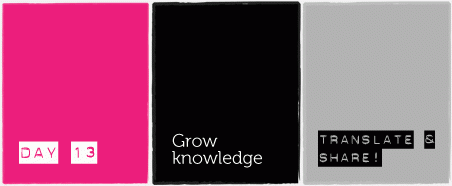
There are countless amounts of information and resources online. Everyday, more and more are being added and shared not just by people with access to book publishers or production companies, but by ordinary users who simply have internet connectivity. Current developments in internet applications, tools and services also strive to make it easier for people to publish, upload and share content, and to connect between different types of spaces, tools and devices.
Women's rights advocates and feminists who work on violence against women have used information and communications technologies (ICTs) strategically and tactically in our advocacy and organising. From documenting violence and abuse through the use of technology, to disseminating information and knowledge, to mobilising support and networks, to lobbying for legal and policy change - these efforts are critical in strengthening the efforts in ending violence against women. As a result, there is a rich diversity of information available on all forms of violence against women. These include facts and statistics, analysis from different perspectives, campaigns and petitions, cultural material and messages, strategies and guides on how to counter specific acts of violence and more. We are able to find, build and share a wide range of information and tactics and work collaboratively to end violence against women all over the world.
However, much of the information available on the internet is still predominantly in English. If you don't speak English, your ideas can be marginalised and your perspectives less heard. In the same way, you may not be able to access, make use of and grow knowledge and information that are available in English.
Grow diversity! Support the efforts of women's rights activists and translate their work. Widen the reach of information, knowledge and perspectives on how to end violence against women to different parts of the world!
1. Pick something
Think of a resource that you really like. It can be an article, campaign brief, petition, how-to guide, video clip or even a tagline.
2. Translate!
- If you know more than 1 language, translate the material into another language that you know.
- There are an increasing number of translation tools and services that can help you with this effort, like online dictionary and phrase lexicons. Use them when you're not sure of certain vocabularies, or check with a few friends. Don't worry if it's not perfect, at least you have now begun the process of making the resource available in a different language :)
- Why not start by translating "Take Back The Tech!" into your own language, and turn it into a local campaign icon? You can check out some of the work by campaigners here.
3. Subtitle videos
- According to YouTube, hundreds of thousands of videos are uploaded everyday. Videos can be great mediums to tell a story, share a lecture or as a how-to guide on sharing skills.
- If you have a favourite campaign video, translate it into your own language by adding subtitles!
- There are a few websites that enable you to add subtitles to video clips and share them. For example, dotSUB and Universal Subtitles.
- Universal Subtitles is an open source web-based application that allows you to add subtitles to any video that has already been published in other video sharing sites, such as YouTube
- This means that you can help women's rights organisations and activists by adding subtitles to their videos in your own language
- To start, create an account, and log in
- Click on "Subtitle a video" and add the URL of the video that you want to translate. Click begin
- Click on "Subtitle me" below the video, and select which language you are translating the video from and to
- Press play and type out the subtitles as you translate. It automatically pauses after 8 seconds, or you can click pause and rewind yourself
- When you're done, click "Next step: Syncing"
- Play the video and press the purple bar or the "down" arrow each time the next line of your translated subtitle should appear.
- You can adjust the timing quite easily by dragging the timeline bar underneath the video.
- When you're done, click "Submit your work".
- Click and copy the Embed code to share it!
- You can test it out by subtitling the Take Back The Tech! video and paste the embed code as a comment on this page :)
4. Share!
- Get in touch with the people who created the resources and let them know about what you're doing
- Once you've translated their materials, email it back to them so they can use it in their communications and advocacy work
- Get in touch with your local women's rights organisation and share the resource with them
- Or publish it on your blog or social networking space :)
- You can also create an account on this site, and publish it here.
Take back the tech! Build knowledge and grow diversity. Support the work of women's rights advocates and activists to end violence against women - translate and share!
- Log in to post comments
